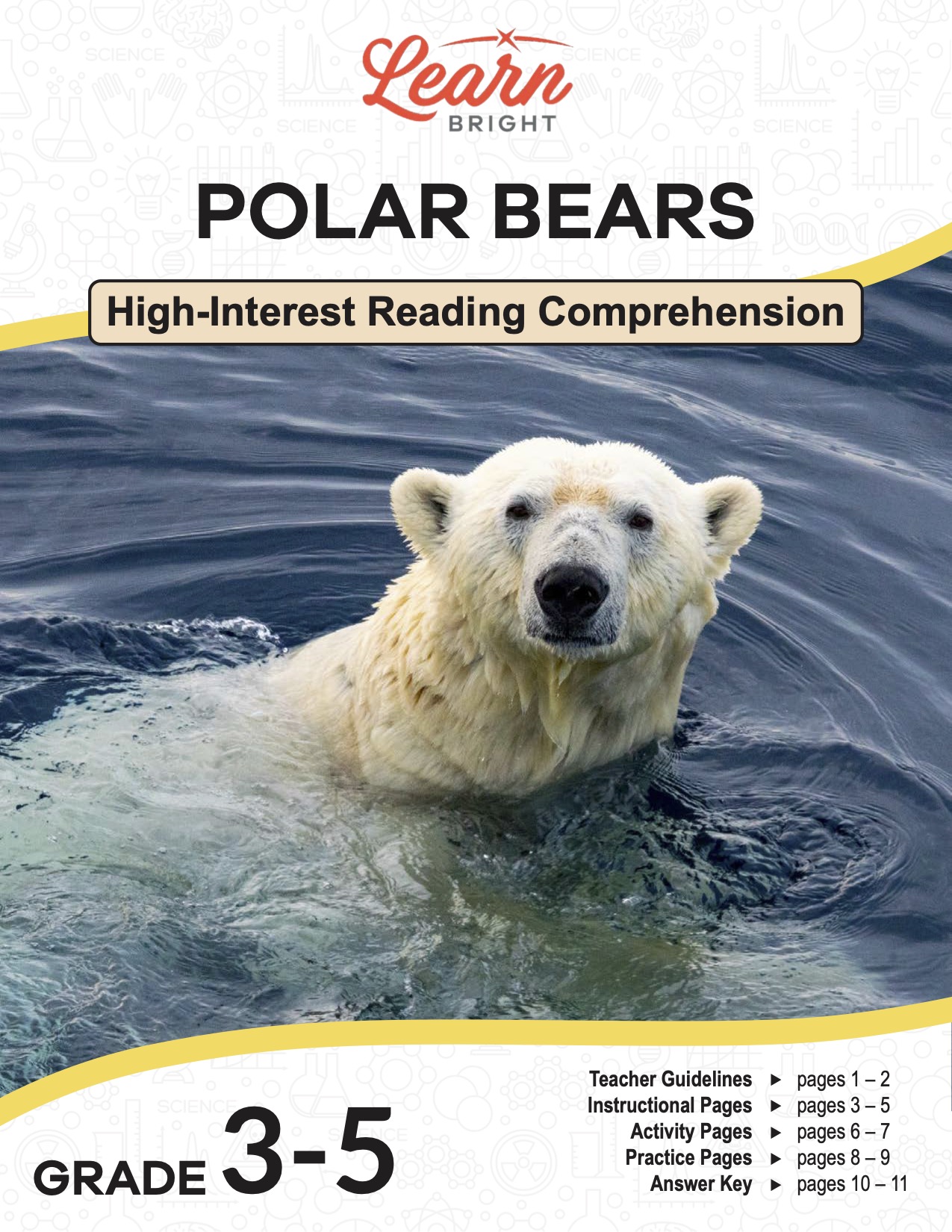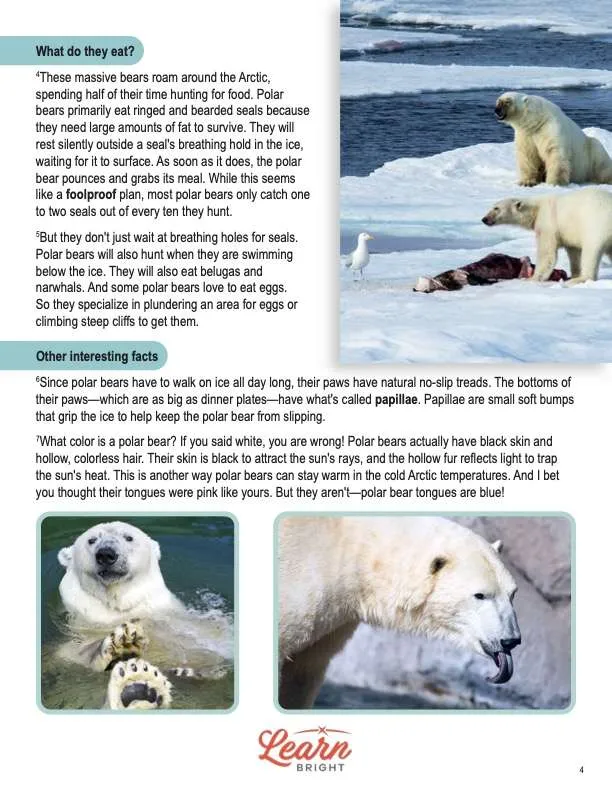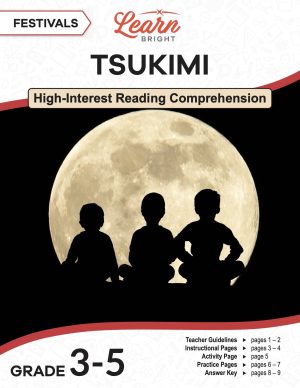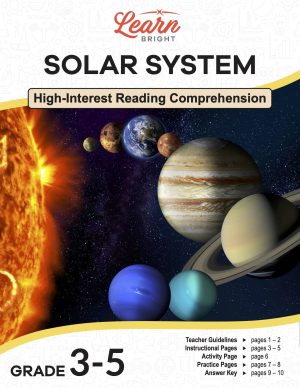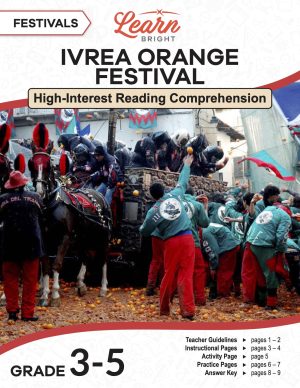Description
What our Polar Bears lesson plan includes
Lesson Objectives and Overview: Polar Bears is a high-interest reading comprehension lesson plan. As such, students will practice various close reading and comprehension skills. In addition, they will learn about a polar bear’s habitat, diet, and behaviors. This lesson is for students in 3rd grade, 4th grade, and 5th grade.
Classroom Procedure
Every lesson plan provides you with a classroom procedure page that outlines a step-by-step guide to follow. You do not have to follow the guide exactly. The guide helps you organize the lesson and details when to hand out worksheets. It also lists information in the yellow box that you might find useful. You will find the lesson objectives, state standards, and number of class sessions the lesson should take to complete in this area. In addition, it describes the supplies you will need as well as what and how you need to prepare beforehand. For this lesson, you will need a number of supplies for the activity. These include water, blue food coloring, cotton balls, butter, sand, and feathers.
Teacher Notes
The paragraph on this page gives you a little more information on the lesson overall and describes what you may want to focus your teaching on. It explains that you can teach this lesson in a whole-class setting or as an independent, small-group activity. The blank lines are available for you to write out any thoughts or ideas you have as you prepare.
POLAR BEARS LESSON PLAN CONTENT PAGES
What Are Polar Bears?
The Polar Bears lesson plan contains three content pages. To start off, it provides a small box with basic background information about polar bears. Polar bears are mammals that live in the Arctic. They are carnivores, so they eat only meat. They live between 25 and 30 years.
Students will first discover that a polar bear is the world’s largest four-legged predator. Adult male polar bears weigh around 1,000 pounds, and females weigh about 500 pounds. Scientists measure the height of bears when they are standing on all fours. They measure from their shoulder to the ground. Polar bears are about 3 to 3 1⁄2 feet tall when on all four paws. But when they stand on their hind legs, they can be over 10 feet tall! Unlike brown bears, polar bears have pointed teeth, very sharp claws, and a long nose with a highly developed—or keen—sense of smell.
The Latin name for a polar bear is Ursus maritimus, meaning sea bear. These bears are very talented swimmers. Their front paws are slightly webbed, so they can use them like a paddle. They hold their back legs flat like a rudder. This helps them to swim quite quickly. In fact, they swim about six miles per hour.
Polar bears have thick body fat and a water-repellant coat that helps insulate them from cold water and air. This is important because they spend a lot of time on sea ice. They use the sea ice for traveling and hunting. Some polar bears have been spotted hundreds of miles away from their homes from using the sea ice and swimming to travel. They are a powerful symbol of strength and endurance.
Diet
The next part of the lesson describes the diet of polar bears. These massive bears roam around the Arctic, spending half of their time hunting for food. Polar bears primarily eat ringed and bearded seals because they need large amounts of fat to survive. They will rest silently outside a seal’s breathing hold in the ice, waiting for it to surface. As soon as it does, the polar bear pounces and grabs its meal. While this seems like a foolproof plan, most polar bears only catch one to two seals out of every ten they hunt.
But they don’t just wait at breathing holes for seals. Polar bears will also hunt when they are swimming below the ice. They will also eat belugas and narwhals. And some polar bears love to eat eggs. So they specialize in plundering an area for eggs or climbing steep cliffs to get them.
Other Interesting Facts
Since polar bears have to walk on ice all day long, their paws have natural no-slip treads. The bottoms of their paws—which are as big as dinner plates—have what’s called papillae. Papillae are small soft bumps that grip the ice to help keep the polar bear from slipping.
What color is a polar bear? If you said white, you are wrong! Polar bears actually have black skin and hollow, colorless hair. Their skin is black to attract the sun’s rays, and the hollow fur reflects light to trap the sun’s heat. This is another way polar bears can stay warm in the cold Arctic temperatures. And I bet you thought their tongues were pink like yours. But they aren’t—polar bear tongues are blue!
While people bathe in water to keep clean, polar bears stay clean by rolling in the snow or swimming. Rolling in the snow also helps them to cool off when they get too hot. And can you believe that polar bears can overheat? It seems impossible to get too hot in the Arctic. However, on long summer days, there is a lot of sun. Polar bears’ black skin soaks up that sun, causing them to overheat. They are built for the cold, so when temperatures rise to about 68°F, it is way too hot for them!
Why Polar Bears are Important
Polar bears are apex predators, meaning they are at the top of the food web in their ecosystem. And large predators serve an essential function in their habitat. In addition, they regulate and control the population of other species. When an animal group loses its natural predators, overpopulation and sickness can occur, damaging the environment.
Polar bears rely on sea ice for everything from hunting to traveling and resting to mating. Students will discover that, unfortunately, polar bears have difficulty adjusting to sea ice loss due to climate change. In fact, the loss of sea ice is the primary threat to polar bears all over the Arctic. As the climate warms, the sea ice melts earlier and forms later, so polar bears have less time to hunt.
POLAR BEARS LESSON PLAN WORKSHEETS
The Polar Bears lesson plan includes two worksheets: an activity worksheet and a practice worksheet. Each one will help students solidify their grasp of the material they learned throughout the lesson. You can refer to the classroom procedure guidelines to know when to hand out each worksheet.
INSULATION SIMULATION ACTIVITY WORKSHEET
Students will get to simulate the ability of various materials to insulate. After filling a bowl with ice and water and blue food coloring, they will place their hand in the water briefly. They will then describe their initial observations and come up with a question of interested based on their observation. Then they will write a hypothesis.
At this point, students will get to experiment with different materials to discover which one is a better insulator. The second worksheet lists questions for students to answer as they go through the experiment.
POLAR BEARS PRACTICE WORKSHEET
The practice worksheet requires students to answer a series of 11 questions. These questions all relate to the content pages, so students will need to refer to them often for the answers. In addition, each question provides which reading tool the question corresponds to, such as text feature, vocabulary, or comprehension.
Worksheet Answer Keys
At the end of the lesson plan document is an answer key for the practice worksheet. The correct answers are all in red to make it easier for you to compare them with students’ responses. If you choose to administer the lesson pages to your students via PDF, you will need to save a new file that omits these pages. Otherwise, you can simply print out the applicable pages and keep these as reference for yourself when grading assignments.

